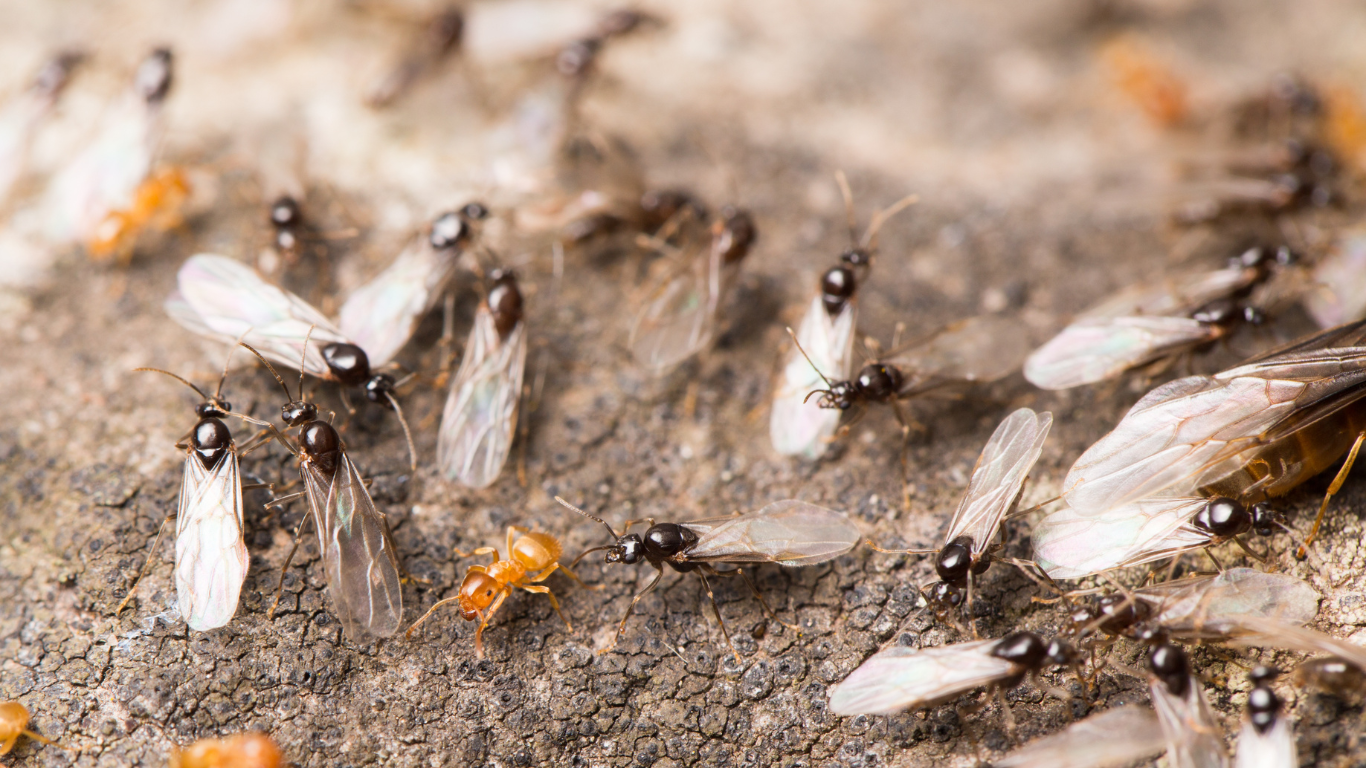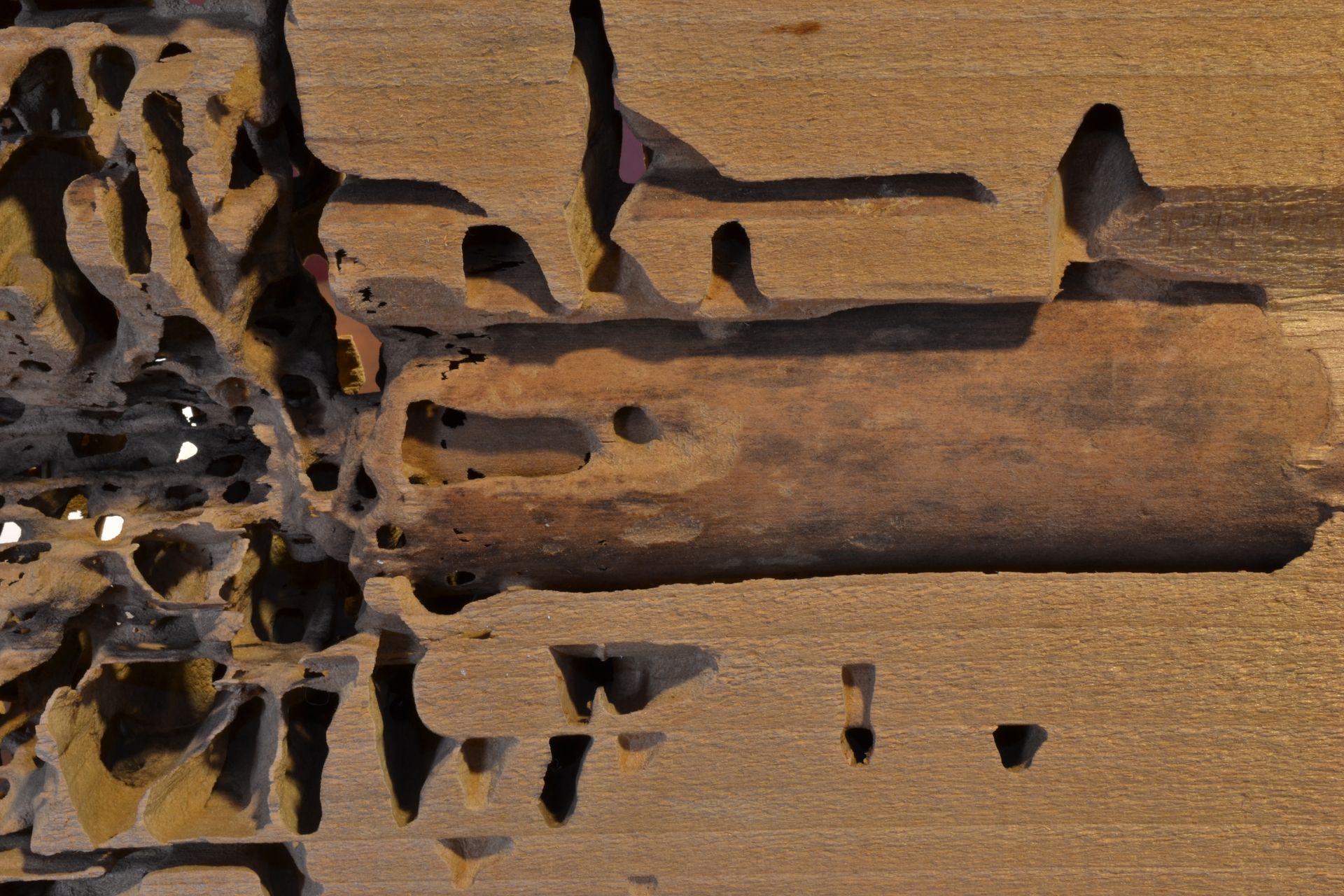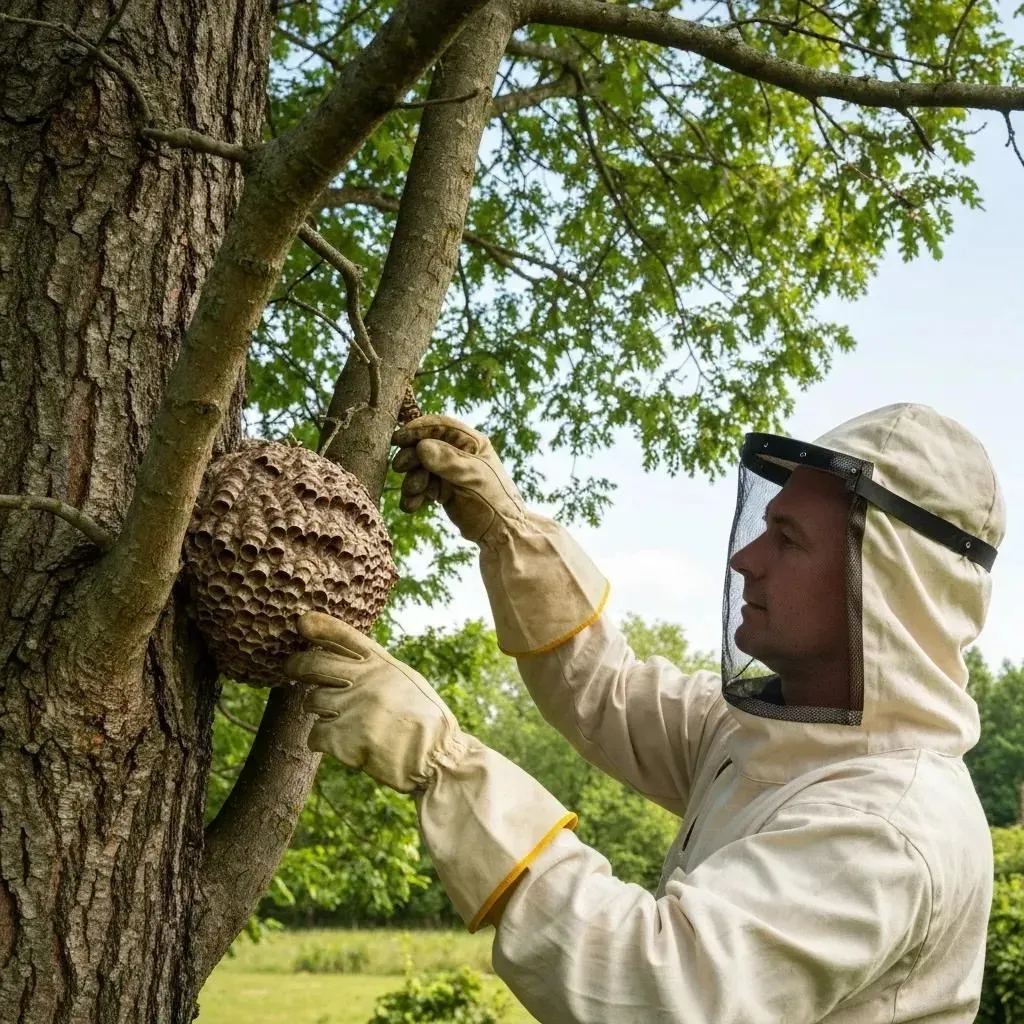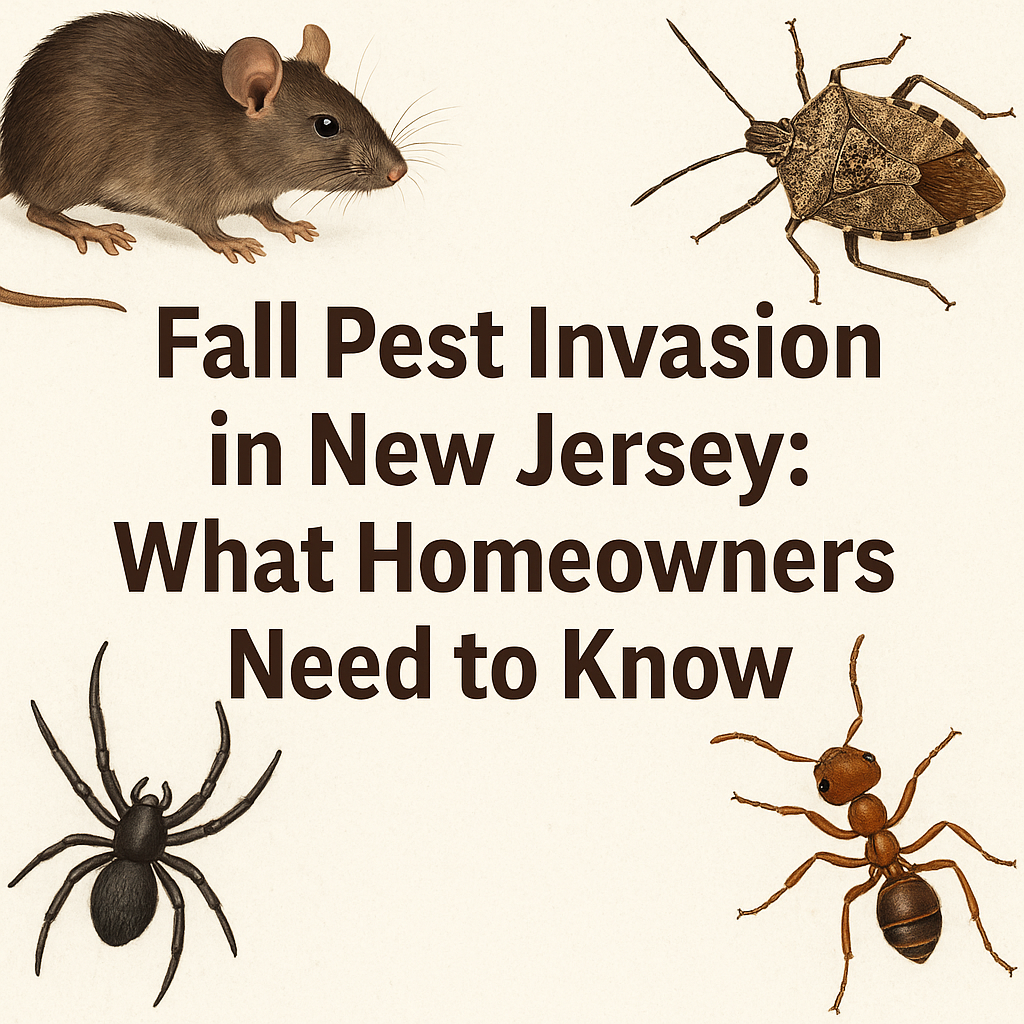What Are These Winged Ants?
Written by
Winged ants could be a sign of a serious pest control problem
If you start to see flying or winged ants in and around your home or business, you're probably worried and want find out what they are and what risks they bring. While these ants can be interesting, they also could be an indication that your home is being targeted by Carpenter Ants.
Be aware that not all winged insects are carpenter ants
Usually when you see ants with wings, its a sign that the ants are establishing or growing their colonies. Swarms tend to show up once their colony matures and reaches it's maximum population sending out the "reproductive'' (flying ants) known as swarmers.
Not all winged insects in New Jersey are carpenter ants or even ants. It is common for customers to mistake a carpenter ant for a termite. One easily distinguishable characteristic is that all forms of ants general have 3 parts to their body. Ants have a very skinny “waist” and “neck,” giving them three distinct body parts. Meanwhile, termites have two different body parts (the head is noticeably separated from the rest of the body). Also, the termite's “neck” is not skinny, and their bodies are about the same width as their head.

When Should I be worried about carpenter ants?
Since ants only appear briefly, before disappearing, take a look at the few signs to keep an eye out for you to know if you potentially have a carpenter ant issue.
- Carpenter Ant Sightings:
- If a solitary, relatively large ant is seen within your residence, it may likely be a carpenter ant scout.
- Carpenter ants are typically characterized by their black or dark brown coloring, although some variations include a combination of black and reddish-brown hues.
- These ants are the largest type commonly found indoors in New Jersey, typically measuring between 1/4 and 1/2 inch.
- Identification tip: When observing closely, one can discern a single node located between the ant's thorax and abdomen if it is indeed a carpenter ant.
- Winged Ants (Swarmers):
- Winged ants, often referred to as swarmers, represent the reproductive members within ant colonies.
- They make their appearance during specific seasons, primarily in the spring within our region.
- These flying ants can attain sizes exceeding 3/4 inch, making them notably distinctive.
- Ant Trails:
- Carpenter ants tend to establish organized trails or pathways as they navigate their surroundings.
- Observers may notice lines of ants diligently following a clear path to and from their chosen food sources or nesting sites.
- Importantly, these organized formations may not always manifest as a lengthy procession; carpenter ants can also be encountered individually.
- Deceased Ants:
- In instances where carpenter ants have taken up residence, encountering deceased ants indoors, particularly in proximity to windows, doors, or entry points, is not uncommon.
- Frass and Wood Shavings:
- The presence of piles of wood shavings beneath wooden objects can indicate carpenter ant activity.
- Unlike termites, carpenter ants do not consume wood; instead, they expel the wood they have chewed.
- These discarded wood shavings are pushed out through "kickout holes" after the ants have excavated tunnels and galleries. It's worth noting that this "frass" may accumulate in concealed locations, such as within wall voids or crawl spaces.
- Audible Signals:
- Faint rustling sounds originating from woodwork or walls may indicate carpenter ant activity.
- These sounds often signify the ants' efforts in constructing tunnels and nests, potentially resulting in structural damage to your residence. Remain attentive to such auditory cues for timely intervention.

Did you know that moisture problems or leaks could cause your carpenter ant problem?
Often times carpenter ants are found in or near areas of high moisture or even water damaged areas of your home or business. They are attracted to damp, moist areas, which makes it easier for them to excavate the wood. If you have water leaks, or moisture issues, there is a very good chance these guys will find it and take advantage.
How to tell if it's carpenter ant damage?
Identifying Carpenter Ant Damage:
- Wood Damage: Regularly inspect wooden structures such as beams, windowsills, and door frames for signs of damage. Carpenter ants create smooth, clean tunnels through the wood that can run either with or against the grain. It's important to note that this sets them apart from termites, whose tunnels are lined with mud-like material and always run parallel to the wood grain.
- Malfunctioning Doors & Windows: Severe carpenter ant damage can lead to doors that stick or fail to close properly. Similarly, windows may become increasingly challenging to open and close due to the structural issues caused by carpenter ant infestations.
- Warping Walls, Floors, and Ceilings: In cases of extensive carpenter ant damage, you may observe walls starting to bulge, floors sagging, and ceilings warping. These distortions in your home's structural elements are warning signs of a significant infestation that requires immediate attention.
- Damaged Insulation: Carpenter ants are known to nest in insulation as well. If you encounter attic insulation that appears damaged or is collecting moisture, it could be a result of an infestation by these wood-destroying pests. Addressing the infestation promptly is crucial to prevent further damage and maintain the integrity of your home's insulation.
How to get rid of carpenter ants in ocean county or throughout NJ?
To safeguard your home from flying ants and prevent carpenter ant infestations, we highly recommend the following proactive measures:
- Seal All Potential Entry Points:
- Thoroughly inspect the exterior walls and foundation of your home for any gaps or cracks and promptly seal them. Pay close attention to areas around electrical conduits, pipes, air conditioning units, and any other entry points into your residence.
- Don't overlook your roof area during this inspection, as even minor openings can provide access for these pests.
- Remove Food Sources:
- Open garbage containers, pet food bowls, and leftover barbecue items are particularly attractive to carpenter ants and other household pests. Ensure that these food sources are tightly sealed or stored securely.
- Eliminate Water Sources:
- Address any indoor plumbing issues such as leaky pipes or faucets promptly to remove potential water sources for ants.
- Outside, maintain gutters to prevent clogs and standing water, as these can also attract carpenter ants. Ensuring proper drainage can discourage ant activity.
- Trim Vegetation Away from Your Home:
- Trim tree limbs, shrubs, and other landscaping elements to create a buffer zone around your home. The goal is to prevent these outdoor features from making direct contact with your house.
- By doing so, you make it more challenging for carpenter ants and other pests to utilize these natural bridges to gain access to your residence.
By following these prevention tips, you can significantly reduce the risk of flying ants and carpenter ants becoming a nuisance or causing damage to your home. Maintaining a proactive approach to pest control is key to a pest-free environment.
How can you distinguish between winged ants and termites?
When it comes to distinguishing between winged ants and termites, it is important to closely observe their physical characteristics. If you spot ants with wings, it is usually an indication that they are establishing or expanding their colonies. These flying ants, also known as swarmers, typically appear once their colony has matured and reached its maximum population.
One common mistake is mistaking carpenter ants for termites. However, there are distinctive features that can help differentiate between the two. One telltale sign of a carpenter ant is the presence of a single node located between its thorax and abdomen. This distinguishing characteristic is not found in termites.
To further distinguish ants from termites, it is important to examine their body structure. Ants generally have three distinct body parts – the head, thorax, and abdomen. Their bodies possess a slender "waist" and "neck," giving them a sleek appearance. On the other hand, termites have two distinct body parts, with the head noticeably separated from the rest of the body. Unlike ants, termites do not have a slender "waist" and "neck," and their bodies are approximately the same width as their head.
While observing the wings of these insects, it is important to note that both ants and termites have two pairs of wings. However, there are notable differences in their wing structures. The wings of termites are straight and of equal size, whereas the wings of ants are angled, with the second set of wings being considerably smaller.
Additionally, examining the antennae can aid in distinguishing between ants and termites. Antennae of ants are bent, while termites have straight antennae. This distinction can be helpful in identifying the insect you are dealing with.
By paying attention to these physical characteristics – the presence of a node in carpenter ants, the body structure, wing shape, and the shape of antennae – one can confidently differentiate between winged ants and termites.

Why professional carpenter ant control in New Jersey is the best choice.
Often times we find the desire to take care of our problems the DIY way. However usually DIY treatments fail because the wrong products are used in the areas, or you may not be able to find the nest location. If the nest isn't targeted, you will have another burst of ants in your home or business sooner or later. The most cost affective solution is to call a licensed exterminator.
Sign up for Resolve's Home Protection Gold Plan for a pest control program that will help prevent and keep carpenter ants & other pests away year-round!
Get Quick, Efficient Pest Control & Exterminating
When pests invade your home, waiting isn't an option. At Resolve Pest Management, we understand how urgent these situations can be. That’s why we offer 24-hour emergency pest control services to residents in Lacey, NJ and Bayville, NJ. Whether it’s rodents, insects, or wildlife, our expert team is available day or night to protect your home and restore your peace of mind.
Our treatments are family and pet-friendly, ensuring that your loved ones—including the furry ones—are safe during and after service. We know your time is valuable, which is why we provide rapid scheduling, getting you the help you need, right when you need it.
If you're dealing with a pest emergency, don’t wait! Contact Resolve Pest Management today for immediate assistance. We're here to help make your home pest-free and comfortable again.
24-Hour Emergency Pest Control
We know pests can strike at any time- day or night. Resolve Pest Management is here to help 24 hours a day.

Family & Pet-Friendly Treatments
Protecting loved ones- furry or not is our #1 priority. We use pet-friendly treatments to give peace of mind.

Testimonials
"Resolve Pest Management is absolutely wonderful. Carlos and his team do thorough work and will put your mind at ease. They explain everything that needs to be done or what they suggest should be done. When we first called, Carlos showed up and checked every area of the house. Not only did he handle the mouse issue, he also found termite damage that was unknown to us. Since then, we have regular maintenance and have even called them other issues like bees. The receptionist is also very professional and kind, working with our availability. My family and I highly recommend Resolve Pest Management."
Tonianne D.
Barnegat Township NJ
Get on Schedule Today







